Drops of Wisdom: Advice from LBC Water Petal Experts
By Amy Nelson
Ask a Living Building owner, designer, contractor, funder, visitor, or occupant to describe his or her experience with their building, and they’ll likely use the word “transformative.” Indeed, when it comes to the way people perceive and relate to the built environment, the paradigm-shifting power of the Living Building Challenge is infinite. But there are gritty realities that go hand-in-hand with the glory of a Living Building, particularly with the Water Petal. Knowing about them in advance can be helpful to those considering the Challenge.
Biohabitats Water Resources Engineer and Landscape Architect, Crystal Grinnell, and Senior Engineering Technician, Ryan Masé have designed and maintained countless onsite water systems, including those used to help clients achieve the stringent requirements of the LBC Water Petal. When it comes to the challenging realities of harvesting, treating, and reusing water at the site scale, they have literally had their hands in it. They have tinkered with equipment to accommodate changing occupancies and uses. They have dealt with stinky surprises. So who better to pass along some water wisdom to anyone considering creating a Living Building?

Before you even begin, understand what water resources are available to you. The amount of water you have available is a key factor in determining the feasibility of a Living Building at a particular site. “There is no one way to get to net positive water for all projects,” says Crystal. “You need to base your choices on the water that is available to you in your physical location.” For example, rainwater harvesting may be a perfect solution for a project in an area where there is steady rain throughout the year, but in areas that experience regular dry periods rainwater harvesting may be very challenging and require large cisterns that may increase project cost. Another example is groundwater. According to the LBC, groundwater may be used to meet water demand, but not every site is suitable for a well.
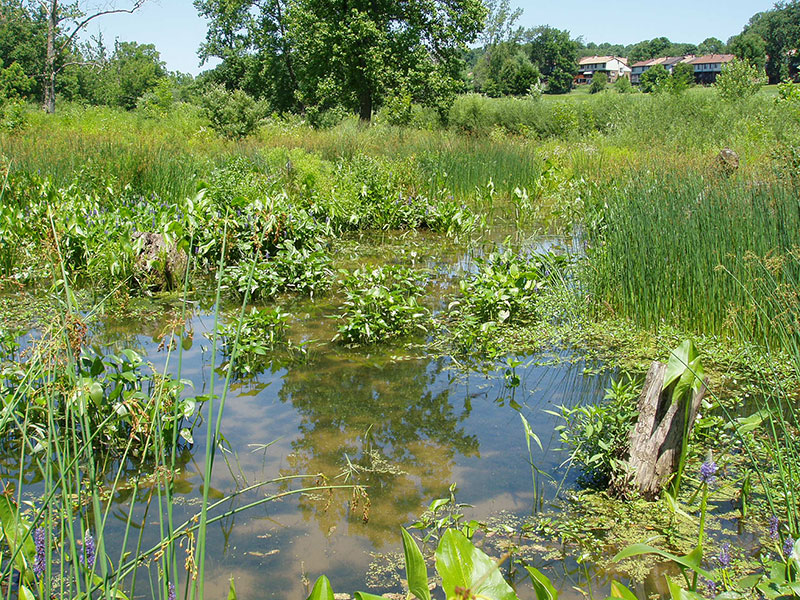
Engage regulators as early in the process as possible. According to Crystal and Ryan, building owners often think of a project timeline in terms of the design phase and the construction phase. “I have seen projects where permitting for unconventional water systems has taken many years,” says Ryan. Folding permitting time into the plan is critical, but that requires knowing what you’re up against. “Engage regulators early on,” he advises, “especially if there has never been an LBC project in your state.” According to Ryan, the permitting timeline can extend even longer than the water experts anticipate. For example, regulators may grant permission to do something new, but require a period of operational testing, which can add to the overall project timeline. Depending on the outcomes, regulators may require a revised permit application if any adaptions are made to the design.
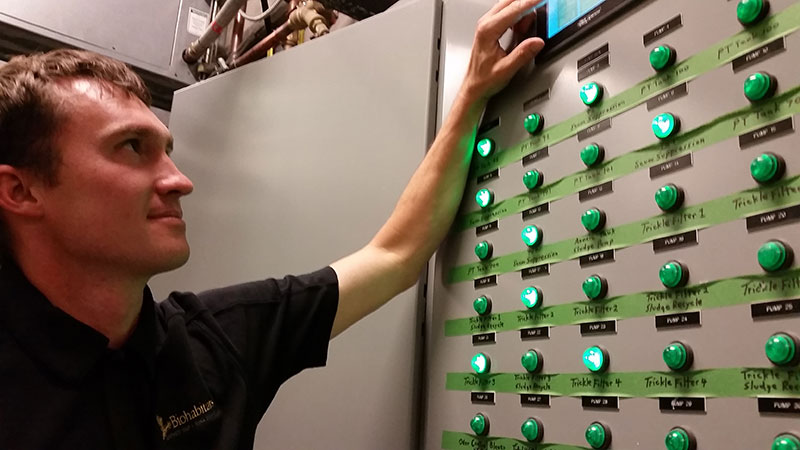
You are not only the building owner, you are now a utility operator as well. “Ask yourself why you are creating a Living Building and understand what that means for the lifespan of the project.” Owners of Living Buildings suddenly find themselves owning a public drinking water supply and a wastewater treatment plant. “That’s not something a typical building owner has to wrap his or her head around,” says Ryan. Operating utilities on the scale of a single building can be a challenging and expensive undertaking. Building owners must not only think about operating costs, but the responsibility–both in terms of reporting and public health and safety–that comes with owning and running a utility. “Talk to experts and consultants,” advises Ryan, “but get an operator on board as soon as possible to understand, on a detailed level, what will be required of you as the owner.” According to Ryan, the sooner you get that person on board and start building relationship, the better. Doing this, he says, will help ensure that both parties understand what’s involved in operating such a unique system, and can enter into it with a net positive mindset.
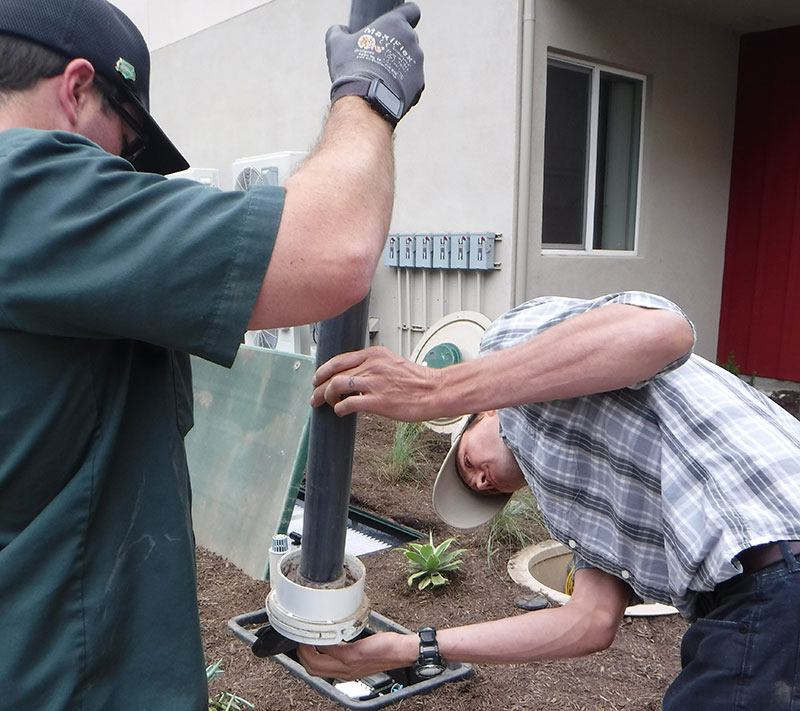
Get comfortable with the “yuck” factor. There is a relationship between a Living Building’s water use and its wastewater system, and building owners and operators have a responsibility to make sure it remains a good one. Buildings that use extremely small volumes of water may have extremely concentrated wastewater, and that can present operational challenges. To be frank, those challenges may be rather stinky. According to Ryan, some can involve some rather interesting optics. “I have seen foam erupting from equipment handling highly concentrated wastewater,” he said. Though that particular incident did not occur in a Living Building, messy situations will arise (if you will). Handling them requires resolve and a willingness to think on one’s feet.
Along those lines…adopt an adaptive management mindset immediately. Even the most talented designer cannot predict with 100% accuracy what will be in a building’s wastewater. “There will always be an element of surprise,” said Crystal. That surprise could come from a new food vendor in the building, or an unplanned event or programming in the space. LBC water systems must also adapt to changing levels of occupancy. According to Crystal and Ryan, adaptation is greatly enhanced when Living Building owners and operators remain continually aware of every water system in the building and how they’re interrelated. “For example,” cautions Ryan, “you need to make sure you don’t run out of your drinking water supply because you accidentally used too much of it to irrigate the landscape.” In other words, vigilance is necessary and ongoing tinkering is to be expected with Living Building water systems.
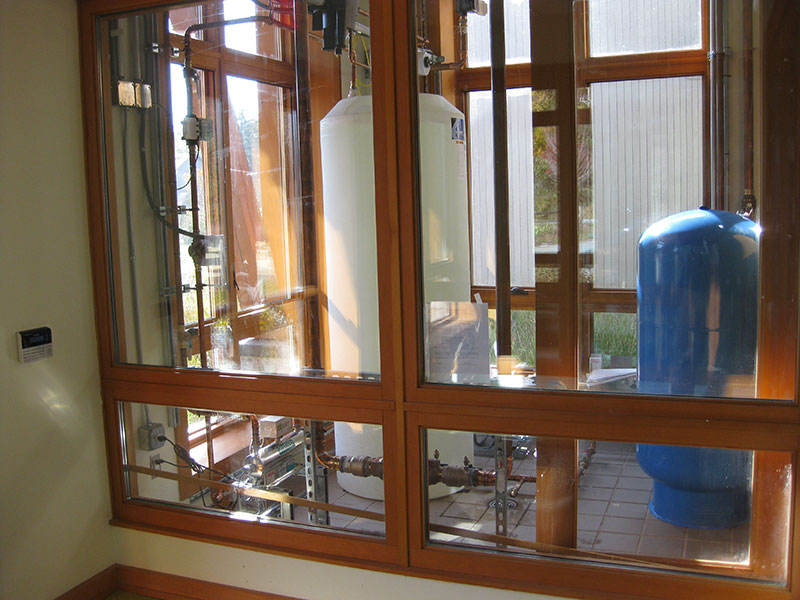
Your water systems will do extra work for your building. Designers of Living Building water infrastructure strive to create systems that function elegantly and visibly. “Wherever possible,” says Ryan, “we try to create transparency in design.” This helps ensure that every person who enters a Living Building will, at some point, come face-to-face with either the physical quantity, or a representation of the water that everyone has to share for the day. That exposure yields many opportunities for passive and active education about responsible and sustainable water use and management. It can also lead to some fun inter-building competition. “I’ve heard anecdotes about some Living Building occupants having floor vs. floor contests to see who can use less water,” said Crystal.
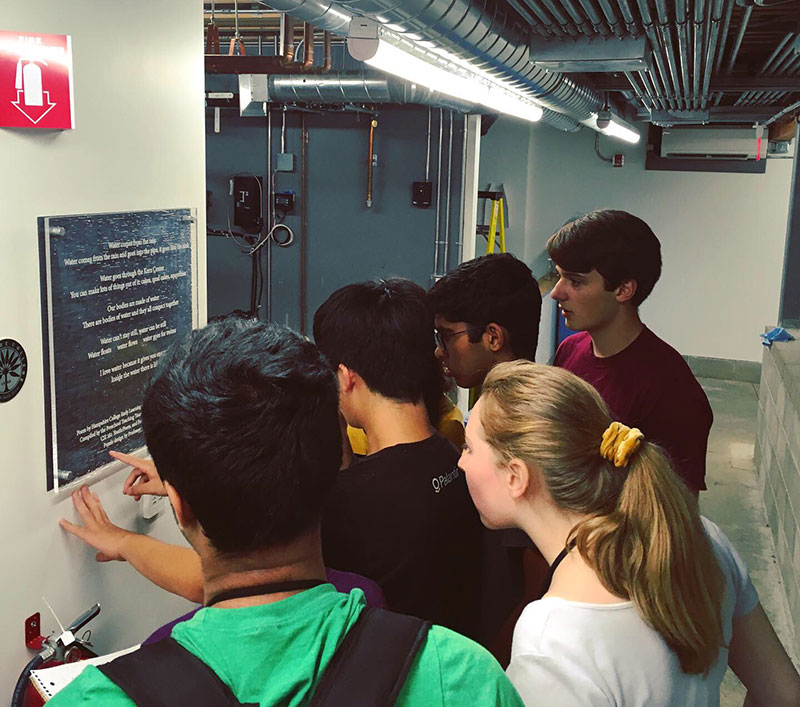
The biophilia charrette is a golden opportunity. Take full advantage of it. The “Beauty + Biophilia” imperative of the LBC’s Beauty Petal requires project teams to engage in “a minimum of one-day exploration of the biophilic design potential for the project.” Such a charette allows the team to create a grand vision for the project and develop cohesive approaches for achieving the LBC Petals. According to our Water Petal experts, it also provides a rare and wonderful opportunity to ensure that everyone is on the same page when it comes to the best and most appropriate use for the site’s water. “A civil engineer’s understanding of ‘clean water’ may be different from that of an onsite wastewater treatment designer or a plumbing engineer,” said Ryan. “When you have all of the players together in one place, it is much easier to ensure the appropriate use for the appropriate water.”
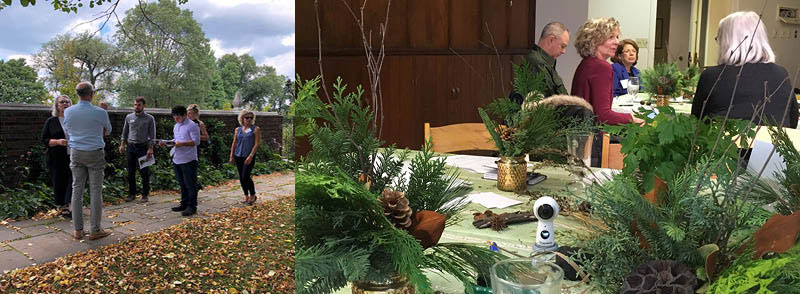
If you build it, they will come. Get used to having visitors in your building. “Many Living Building owners think a lot about the educational value of their building, and plan for things like large tour groups coming through,” said Ryan. “But some owners may be surprised to discover that they’ve become a tourist attraction,” said Ryan. Ryan and Crystal say that the positive aspects of all that traffic far outweigh the challenges associated with handling large amounts of visitors. Exposing LBC systems to new sets of eyes not only enhances people’s awareness of resource use and connection to natural systems, but also open up revenue sources and funding possibilities.
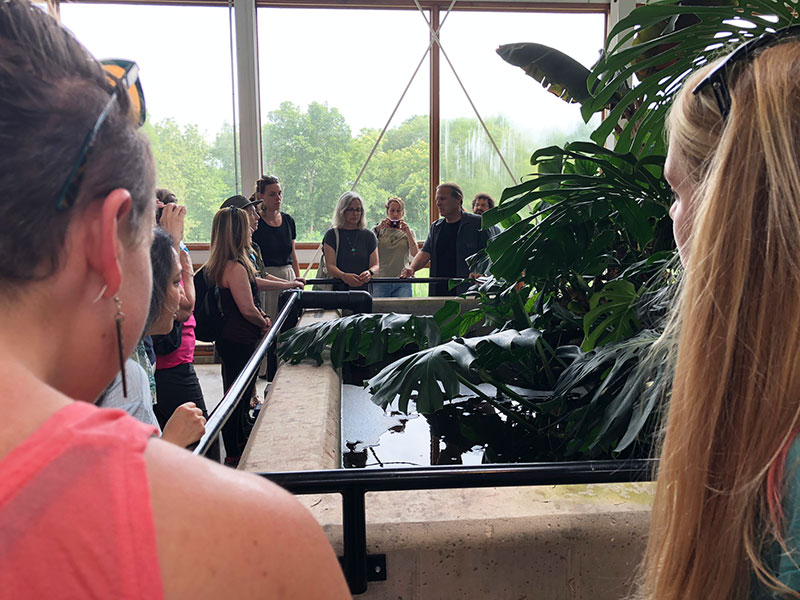
Never forget why you decided to pursue the Living Building Challenge. “Even though it may not make good financial sense to do this kind of thing at the scale of a single building, it is still important in changing society’s overall mindset towards one of resiliency and adaptation to a changing climate, “You are also paving the way to change regulations that govern the way things get built, and dramatically increasing awareness of resource consumption,” said Ryan. “We’ve become accustomed to just turning on the tap, having water come out, and assuming there is an endless supply,” said Crystal. “All of the users of a Living Building become hyper aware of their own water use and how that impacts the ability of others in the building to use water. They begin to see drinking water as the precious resource it really is.”
